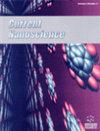An Insight into Enhanced Roles of Plant and Microbial Nanobionics
IF 1.5
4区 材料科学
Q4 BIOTECHNOLOGY & APPLIED MICROBIOLOGY
引用次数: 0
Abstract
Plant nanobionics is an interdisciplinary field of science with the concepts of plant biology and nanotechnology applied. The field is in the developing stage with various applications, including photosynthesis enhancement, light-emitting plants, sensors, and energy harvesting from plant organelles. For instance, advanced nanomaterials like carbon nanotubes are inserted in plant tissues to achieve various functions. The photosynthesis process can be enhanced by improving light absorption using single-walled carbon nanotubes that are impregnated in the leaves of plants. Plants are able to emit light when various nanostructures are encapsulated inside. Plant fuel cells can be constructed by embedding nanomaterials in the plant organelles for energy generation. On the other hand, various sensing devices have been developed for agriculture using plant nanobionics, which detect pollutants, toxic chemicals, and soil moisture. These devices are expected to be superior to the conventional sensors used in agriculture. Apart from that, microorganisms can be used as catalysts for energy generation and wastewater treatment in microbial fuel cells. In this study, microbial nanobionics are discussed for the nanomaterials coated on the electrodes of a microbial fuel cell to improve electron transfer and biofilm formation.植物和微生物纳米仿生学的增强作用
植物纳米仿生学是一个应用了植物生物学和纳米技术概念的跨学科科学领域。该领域正处于各种应用的发展阶段,包括光合作用增强、发光植物、传感器和从植物细胞器中获取能量。例如,将碳纳米管等先进纳米材料插入植物组织中,以实现各种功能。光合作用过程可以通过使用浸渍在植物叶片中的单壁碳纳米管来改善光吸收来增强。当各种纳米结构被封装在植物内部时,植物能够发光。植物燃料电池可以通过在植物细胞器中嵌入纳米材料来制造能量。另一方面,利用植物纳米仿生学为农业开发了各种传感设备,可以检测污染物、有毒化学物质和土壤湿度。预计这些设备将优于农业中使用的传统传感器。除此之外,微生物可以用作微生物燃料电池中能量产生和废水处理的催化剂。在本研究中,讨论了微生物纳米仿生学,将纳米材料涂覆在微生物燃料电池的电极上,以改善电子转移和生物膜的形成。
本文章由计算机程序翻译,如有差异,请以英文原文为准。
求助全文
约1分钟内获得全文
求助全文
来源期刊

Current Nanoscience
工程技术-材料科学:综合
CiteScore
3.50
自引率
6.70%
发文量
83
审稿时长
4.4 months
期刊介绍:
Current Nanoscience publishes (a) Authoritative/Mini Reviews, and (b) Original Research and Highlights written by experts covering the most recent advances in nanoscience and nanotechnology. All aspects of the field are represented including nano-structures, nano-bubbles, nano-droplets and nanofluids. Applications of nanoscience in physics, material science, chemistry, synthesis, environmental science, electronics, biomedical nanotechnology, biomedical engineering, biotechnology, medicine and pharmaceuticals are also covered. The journal is essential to all researches involved in nanoscience and its applied and fundamental areas of science, chemistry, physics, material science, engineering and medicine.
Current Nanoscience also welcomes submissions on the following topics of Nanoscience and Nanotechnology:
Nanoelectronics and photonics
Advanced Nanomaterials
Nanofabrication and measurement
Nanobiotechnology and nanomedicine
Nanotechnology for energy
Sensors and actuator
Computational nanoscience and technology.
 求助内容:
求助内容: 应助结果提醒方式:
应助结果提醒方式:


